
Silphium is a genus of North American plants in the tribe Heliantheae within the family Asteraceae.
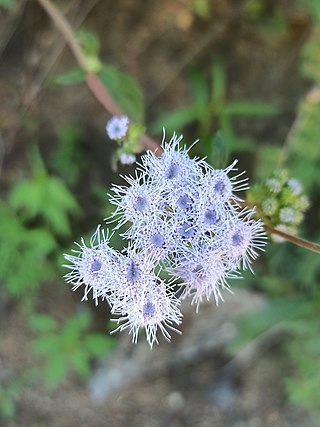
Ageratum is a genus of 40 to 60 tropical and warm temperate flowering annuals and perennials from the family Asteraceae, tribe Eupatorieae. Most species are native to Central America and Mexico but four are native to the United States.

Eupatorium is a genus of flowering plants in the family Asteraceae, containing from 36 to 60 species depending on the classification system. Most are herbaceous perennials growing to 0.5–3 m (1.6–9.8 ft) tall. A few are shrubs. The genus is native to temperate regions of the Northern Hemisphere. Most are commonly called bonesets, thoroughworts or snakeroots in North America. The genus is named for Mithridates Eupator, king of Pontus.
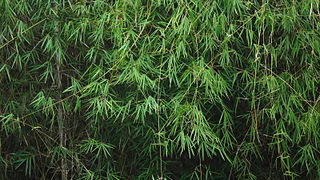
Atractantha is a South American genus of bamboo in the grass family, native to Brazil, Colombia, and Venezuela.
- Atractantha amazonicaJudz. & L.G.Clark - Amazonas in Brazil, Amazonas in Venezuela, Vaupés in Colombia
- Atractantha aureolanataJudz. - Espírito Santo, Bahia
- Atractantha cardinalisJudz. - Bahia
- Atractantha falcataMcClure - Bahia
- Atractantha radiataMcClure - Bahia
- Atractantha shepherdianaSantos-Gonç. - Espírito Santo
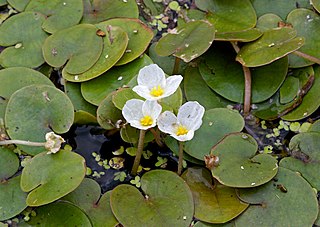
Hydrocharis is a genus of aquatic plants in the family Hydrocharitaceae described as a genus by Carl Linnaeus in 1753. It is widespread across much of Europe and Asia, plus a few scattered locations in Africa. It is also reportedly naturalized in parts of North America.

Polystichum is a genus of ferns in the family Dryopteridaceae, subfamily Dryopteridoideae, according to the Pteridophyte Phylogeny Group classification of 2016. The genus has about 500 species and has a cosmopolitan distribution. The highest diversity is in eastern Asia, with about 208 species in China alone; the region from Mexico to Brazil has at least 100 additional species; Africa, North America, and Europe have much lower diversity. Polystichum species are terrestrial or rock-dwelling ferns of warm-temperate and montane-tropical regions. They are often found in disturbed habitats such as road cuts, talus slopes, and stream banks.

Duvalia is a succulent plant genus in the subfamily Asclepiadoideae, in the family Apocynaceae (dogbane).
Pappobolus is a genus of flowering plant in the family Asteraceae native to the Andes Mountains of Colombia, Ecuador, and Peru.

Eutrochium is a North American genus of herbaceous flowering plants in the family Asteraceae. They are commonly referred to as Joe-Pye weeds. They are native to the United States and Canada, and have non-dissected foliage and pigmented flowers. The genus includes all the purple-flowering North American species of the genus Eupatorium as traditionally defined, and most are grown as ornamental plants, particularly in Europe and North America.

Tithonia is a genus of flowering plants in the tribe Heliantheae within the family Asteraceae.
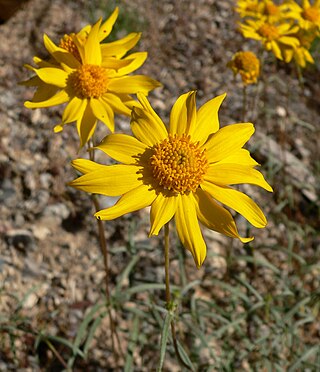
Heliomeris is a genus of flowering plants in the family Asteraceae, known generally as false goldeneyes.
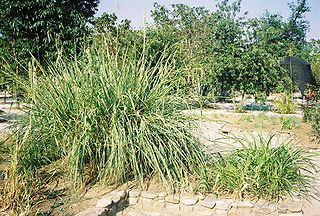
Tripsacum is a genus of plants in the grass family and native to the Western Hemisphere. Gamagrass is a common name for plants in this genus.

Hymenostephium is a genus of flowering plants in the family Asteraceae. It includes herbs and slender shrubs that occur from Mexico through to Venezuela and north-western Argentina.
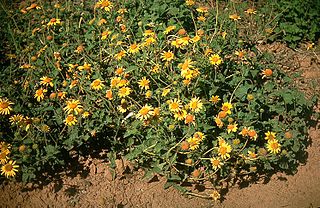
Simsia is a genus of flowering plants in the tribe Heliantheae within the family Asteraceae. It includes annuals, herbaceous perennials, and shrubs. They range from the western United States south through Central and South America to Argentina, with the center of diversity occurring in Mexico. The genus is named for British physician and botanist John Sims (1749–1831). Although some species are relatively rare, others have become common weeds that line the roadsides and fields of Mexico, often forming dense stands mixed with Tithonia and other Asteraceae. Some species are known by the common name bushsunflower.

Iostephane is a genus of Mexican flowering plants in the family Asteraceae. They were first published in G.Bentham & J.D.Hooker, Genera Plantarum Vol.2 on page 368 in 1873.
Rhysolepis was a genus of Mexican plants in the tribe Heliantheae within the family Asteraceae. Until 2011, when botanists Schilling & Panero studied the subtribe Helianthinae based on molecular sequences of nuclear ITS, ETS, and cpDNA, coming to a conclusion that that the genus ViguieraKunth, did not constitute a monophyletic group. Among their conclusions they proposed to reclassify the genus, dividing and relocating its species in at least eleven genera: AldamaLa Llave, BahiopsisKellogg, Calanticaria(B.L. Rob. & Greenm.) E.E. Schill. & Panero, DavilanthusE.E. Schill. & Panero, DendroviguieraE.E. Schill. & Panero, GonzaleziaE.E. Schill. & Panero, HeiseriaE.E. Schill. & Panero, HeliomerisNutt., HymenostephiumBenth., SidneyaE.E. Schill. & Panero and ViguieraKunth.

Chrysogonum is a genus of flowering plants in the family Asteraceae found only in eastern North America. Confusion regarding species that were named in Chrysogonum from other parts of the world, such as Madagascar, was clarified by Stuessy who reduced the genus to having only a single species with two varieties. A similar treatment was proposed by Nesom, although in that treatment 3 varieties were accepted. The plants are low-growing terrestrial herbs with yellow flower heads containing both disc florets and ray florets. The genus is distinctive in having pistillate ray florets and staminate disk florets, and the pistil of the ray floret is fused to the adjacent phyllary as well as 3 paleae and their associated disk florets to form a "cypsela complex". The species is grown as an ornamental plant under the common name of Green and Gold, and is used primarily as a ground cover.

Maundia is a genus of alismatid monocots, described in 1858. Maundia was formerly included in the family Juncaginaceae but is now considered to form a family of its own under the name Maundiaceae. It contains only one known species, Maundia triglochinoides, endemic to Australia.

Lois Clark (1884-1967) was an American botanist, bryologist, and professor who studied plants of the Northwestern United States, particularly the genus Frullania. She taught at the University of Idaho and the University of Washington. The standard author abbreviation L.Clark is used to indicate this person as the author when citing a botanical name.
















